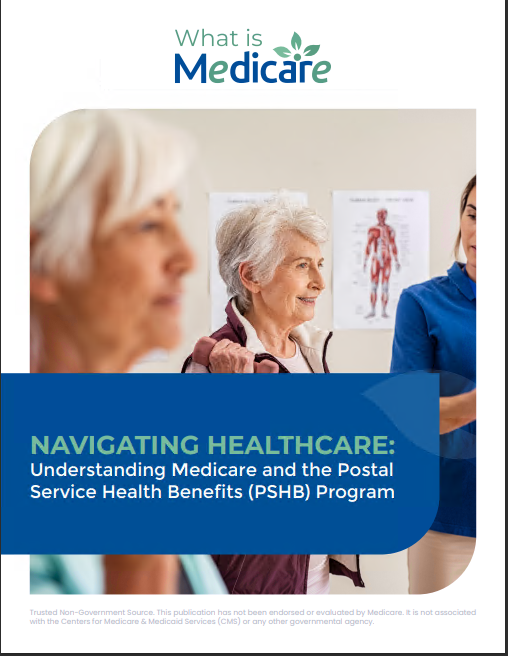Key Takeaways
- Understanding Medicare’s key enrollment periods is essential for ensuring you have the coverage you need when you need it.
- Missing important Medicare enrollment deadlines can result in significant penalties and gaps in your healthcare coverage.
Don’t Miss Out: Key Medicare Enrollment Periods You Need to Know
Navigating the world of Medicare can be daunting, especially with the various enrollment periods you need to consider. Each of these periods has specific rules and timelines, and missing them can result in costly penalties or delays in coverage. Whether you are approaching Medicare eligibility for the first time or considering changes to your existing plan, understanding these enrollment periods is crucial. In 2024, with healthcare needs more complex than ever, staying informed about when and how to enroll can save you both time and money.
Initial Enrollment Period (IEP)
The Initial Enrollment Period (IEP) is the first opportunity for most people to sign up for Medicare. It’s a seven-month window that starts three months before your 65th birthday, includes the month you turn 65, and ends three months after your birthday month. This period is essential for anyone new to Medicare, as it ensures that you can begin receiving benefits as soon as you are eligible.
During the IEP, you can enroll in Medicare Part A (hospital insurance) and Part B (medical insurance). If you’re already receiving Social Security benefits before turning 65, you will be automatically enrolled in Part A and Part B. However, if you’re not automatically enrolled, you must sign up manually during this period to avoid any penalties.
Missing the IEP can result in late enrollment penalties. For Medicare Part B, this penalty is a 10% increase in your premium for each 12-month period you were eligible but didn’t sign up. Therefore, it’s crucial to enroll during your IEP to avoid these added costs.
Who Should Pay Attention?
If you are turning 65 soon or have recently turned 65 and are not automatically enrolled, this period is critical for you. Additionally, if you are still working and have health insurance through your employer, you should carefully consider whether to sign up for Medicare Part B during this time or delay it. Consulting with a licensed insurance agent can help clarify your options.
General Enrollment Period (GEP)
The General Enrollment Period (GEP) is another important window to be aware of if you missed your Initial Enrollment Period. The GEP runs from January 1 to March 31 each year. This period allows you to sign up for Medicare Part A and/or Part B if you didn’t sign up during your IEP and aren’t eligible for a Special Enrollment Period.
Enrollment during the GEP means your coverage will start on July 1 of that year. However, similar to missing the IEP, enrolling during the GEP could result in penalties. If you delayed enrolling in Part B without having other credible coverage, you may face the same 10% penalty on your premiums.
When is GEP Relevant?
The General Enrollment Period is crucial for individuals who missed their IEP and do not qualify for a Special Enrollment Period. It’s a chance to avoid further delay in your coverage, although it may come with higher costs due to penalties. If you find yourself in this situation, enrolling during the GEP is your best option to secure Medicare coverage.
Special Enrollment Period (SEP)
The Special Enrollment Period (SEP) offers flexibility for those who qualify. SEPs are designed for individuals who didn’t sign up for Medicare during their IEP because they had other health coverage, such as through an employer. You can enroll in Medicare during the SEP without facing the late enrollment penalties typically associated with the GEP.
One of the most common SEPs is for individuals who are working past age 65 and have health insurance through their employer. Once their employment ends, they have an eight-month SEP to enroll in Medicare Part A and/or Part B without penalty. This period begins the month after your employment ends or the month after your group health insurance coverage ends, whichever comes first.
SEP Scenarios to Consider
Special Enrollment Periods are vital for those who continue working after 65 or have other health insurance coverage. SEPs can also apply to other life events, such as moving to a new area with different plan options or losing other coverage. Understanding whether you qualify for an SEP can prevent unnecessary penalties and ensure you maintain continuous coverage.
Medicare Advantage Open Enrollment Period
The Medicare Advantage Open Enrollment Period, running from January 1 to March 31, allows those already enrolled in a Medicare Advantage Plan to make changes. During this time, you can switch to another Medicare Advantage Plan or return to Original Medicare (Part A and Part B). If you return to Original Medicare, you may also enroll in a Part D prescription drug plan.
This period is only available to individuals currently enrolled in a Medicare Advantage Plan. It’s a crucial time to reassess your healthcare needs and ensure your current plan still meets those needs. If your plan no longer fits your lifestyle or budget, this is the time to make a change.
Making the Right Choice During Open Enrollment
The Medicare Advantage Open Enrollment Period is your opportunity to fine-tune your healthcare coverage. Whether you’re looking for more comprehensive coverage or wanting to reduce costs, carefully evaluating your options during this time can lead to better coverage suited to your current situation.
Medicare Part D Enrollment Period
Medicare Part D, which covers prescription drugs, has its own enrollment period, which aligns with the Fall Open Enrollment Period (October 15 to December 7). During this time, you can enroll in or change your Medicare Part D plan.
Even if you don’t take many medications now, enrolling in a Part D plan is wise to avoid late enrollment penalties. The penalty for not enrolling in a Part D plan when first eligible is 1% of the national base beneficiary premium, multiplied by the number of months you were eligible but didn’t enroll.
Why Enroll in Medicare Part D?
If you’re currently on Medicare but haven’t yet enrolled in a Part D plan, the Fall Open Enrollment Period is the time to do so. Part D plans can vary significantly in cost and coverage, so reviewing your options during this period ensures that you have the prescription drug coverage that best suits your needs.
Fall Open Enrollment Period (Annual Enrollment Period)
The Fall Open Enrollment Period, also known as the Annual Enrollment Period (AEP), is perhaps the most well-known of the Medicare enrollment periods. This period runs from October 15 to December 7 each year and is the time when all Medicare beneficiaries can make changes to their coverage.
During the AEP, you can switch from Original Medicare to a Medicare Advantage Plan, change from one Medicare Advantage Plan to another, or switch from a Medicare Advantage Plan back to Original Medicare. You can also join, switch, or drop a Medicare Part D prescription drug plan.
Maximizing Your Benefits During AEP
The Fall Open Enrollment Period is the most flexible time for making changes to your Medicare coverage. Whether your healthcare needs have changed, your current plan isn’t meeting your expectations, or you’ve found a plan that better suits your needs, the AEP is your annual opportunity to make adjustments.
What Happens if You Miss an Enrollment Period?
Missing an important Medicare enrollment period can lead to significant consequences, including late enrollment penalties and gaps in your coverage. These penalties can add up over time, making healthcare more expensive. For example, if you miss your IEP and don’t qualify for an SEP, you’ll need to wait until the GEP to enroll, and your coverage won’t start until July 1 of that year.
It’s also essential to consider that missing the Fall Open Enrollment Period means you’ll be locked into your current plan for another year, barring any qualifying events that would allow for an SEP. This could result in higher out-of-pocket costs or inadequate coverage if your healthcare needs change.
Stay Informed and Plan Ahead
With so many important Medicare enrollment periods to keep track of, it’s easy to feel overwhelmed. However, staying informed and planning can help you navigate these periods effectively. Mark your calendar with key dates and review your current coverage regularly to ensure it still meets your needs.
Consider consulting with a licensed insurance agent who can help guide you through these enrollment periods and ensure you’re making the best choices for your healthcare. Remember, missing out on the right time to enroll can have long-term financial and health consequences, so take the time to understand and utilize each enrollment period to your advantage.
Protect Your Coverage and Avoid Penalties
Medicare’s various enrollment periods are designed to give beneficiaries the flexibility they need to manage their healthcare. However, with flexibility comes the responsibility to stay informed and proactive. Missing key enrollment periods can result in penalties and delays in coverage that could have a lasting impact on your healthcare and finances.
By understanding each enrollment period, you can make informed decisions about your Medicare coverage. Whether you’re enrolling for the first time or considering changes to your existing plan, knowing when and how to act will help you avoid unnecessary costs and ensure that your coverage aligns with your health needs.
Contact Information:
Email: [email protected]
Phone: 5025559012










